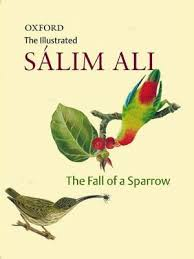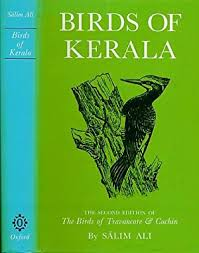Salim Ali is one of the greatest ornithologists and naturalists in India. He worked to protect and document birds and their habitats. He was the first Indian to systematically conduct bird surveys all over India. Ali popularized ornithology and further developed this field in India.
Index
Early life
Before being India’s Birdman he was Sálim Moizuddin Abdul Ali born in Bombay in 1896. Born into a Sulaimani Bohra family in Bombay, he was the ninth and youngest child.
Ali’s father Moizuddin died when he was one year old. His mother Zeenat-un-Nissa died when he was three years old. Along with his siblings, Ali was brought up by his maternal uncle, Amiruddin Tyabji.
As a youngster, Salim was very much interested in sport shooting. After shooting down a bird with his toy gun he realized it looked quite different from a sparrow which he assumed it was and took it to his uncle.
His uncle, who was a member of the BNHS( Bombay Natural History Society ), took him to W.S. Millard, who encouraged and helped spark the young boy’s passion for ornithology.
Education
Salim Ali studied in Zenana Bible and Medical Missionary school in Girgaum with two of his sisters. Due to several health conditions, he had to take several breaks from his studies and as a result, barely passed his matriculation.
He then continued his education in St.Xavier college, Bombay, however, he dropped out and went to Burma to look after the family business of tungsten mining. The forests surrounding this area provided an opportunity for Ali to hone his naturalist (and hunting) skills
Upon his return, he decided to take up commercial law and accountancy at Davar’s College of Commerce. He was then urged to pursue his true passion by Father Blatter and prompted him to take a zoology course.
Career
Lacking an ornithology degree from a university he couldn’t get into the zoological survey of India. He became a guide lecturer at a museum in Bombay.
Ali later quit this job and went to Germany and studied under professor Erwin Stresemann at Berlin’s Natural History Museum.
After returning to India in 1930, he rejoined the museum as a clerk, as his original post had been eliminated due to lack of funding. This allowed him to continue his research.
Eventually, he received an opportunity to conduct systematic bird surveys of the princely states that included Hyderabad, Cochin, Travancore, Gwalior, Indore and Bhopal with the sponsorship of the rulers of those states. He was aided in his surveys by Hugh Whistler.
He published a research paper discussing the nature and activities of the weaver bird in 1930. The article made him famous and established his name in the field of ornithology.
Books
In 1941, he published the ‘The Book of Indian Birds’, which became a very popular handbook that popularized ornithology among the common man.
He collaborated with ornithologist S. Dillon Ripley to write the ten-volume work the ‘Handbook of the Birds of India and Pakistan’ which took ten years of research to complete.
Ali wrote his autobiography ‘The fall of a sparrow’ in 1985. This is a more personal book describing his journey into ornithology, unlike his usual books which purely focused on birds.
He also worked to provide a pictorial guide to Indian birds with extensive information and beautiful illustrations by John Henry naming the book ‘A pictorial Guide to the birds of the Indian subcontinent’.
Ali also produced a number of regional field guides, including The Birds of Kerala, The Birds of Sikkim, The Birds of Kutch (later as The Birds of Gujarat), Indian Hill Birds and Birds of the Eastern Himalayas.
Following India’s independence in 1947, Ali played a vital role in acquiring funding for the BNHS by writing to the then Prime Minister Jawaharlal Nehru for help. He was instrumental in promoting ornithology in India and was a major influence in conservation-related issues in post-independence India.
He also played a crucial role in the setting up of the Bharatpur Bird Sanctuary in Rajasthan, and in stopping the destruction of the Silent Valley National Park in Kerala.
“The Salim Ali bird sanctuary” founded in 1988 named after him stands as the only bird sanctuary in Goa till date.

Awards
For his valuable contributions, Dr. Ali was conferred with several of the highest awards.
- The Indian government gave Dr Salim Ali a Padma Bhushan in 1958 and the Padma Vibhushan in 1976.
- In 1967, he became the first non-British citizen to receive the Gold Medal of the British Ornithologists’ Union.
- He received the John C. Phillips memorial medal of the International Union for Conservation of Nature and Natural Resources in 1969.
Dr Salim Ali died at the age of 90 on June 20, 1987 after a prolonged battle with prostate cancer.





